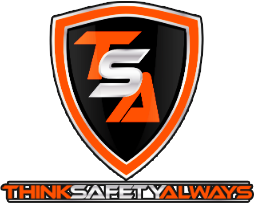Riggers work with cranes to move loads on construction sites. They use pulley systems, cables, and chains to transfer heavy objects from one area of the site to another and secure or move objects from lower surfaces to higher surfaces.
Signal personnel guide crane operators using correct signals. These workers use voice, hand, audible, and new signals to direct crane operators. All construction sites must use qualified, certified riggers and signal persons to carry out construction activity using cranes. Therefore, qualified rigging and signaling training is vital to meet OSHA requirements and ensure safety in construction sites.
What is Rigging and Signaling Training?
Rigging and signaling training gives your employees detailed insight into the working of cranes, their signals, meanings, and concepts such as “center of gravity,” vital to operating cranes effectively. Additionally, OSHA CFR 1926.1428(c) makes it mandatory for signal persons to be proficient in hand signals.
The training programs are designed to equip riggers with basic and comprehensive knowledge to ensure proper crane stability, balance, mobility, and details like the maximum weight a crane can handle.
The programs also teach riggers to identify which hitches are best for tying. Qualified rigging and signaling programs help workers gain essential knowledge and experience to operate cranes and perform and understand signals.
Importance of Qualified Rigging and Signaling Training
Riggers are required to have correct knowledge of rigging techniques and crane safety techniques to prevent site hazards. Similarly, signal persons should accurately understand various signals for safety in construction sites. The significance of a signal person is paramount in situations where the crane operator’s view is not unobstructed and clear.
Satisfy OSHA Requirements
Signalperson training is essential to meet OSHA requirements. The experts must have certifications from a third-party evaluator to show that they are qualified to perform the function.
While riggers are not mandatorily required to undergo rigging training as per OSHA requirements, they can benefit significantly from rigging certifications by an accredited organization. Most employers prefer hiring certified riggers to ensure personnel and equipment safety.
Knowledge and Experience
Rigging training programs teach employees basic concepts about cranes, crane safety, and maintenance techniques. Trainees also gain hands-on experience in operating cranes and performing signals. It’s critical to have detailed knowledge of crane safety techniques while working as a rigger or signal person.
Riggers and signal persons should also be well-versed in technicalities involved in performing boom movements and lifting with cranes. The training prepares riggers and signal persons to take on responsibilities of riggers and signal persons.
Contact Us for Qualified Rigging and Signaling Training
You may reach out to Think Safety Always if you are looking for high-quality qualified rigging and signaling training in South Florida. You can learn more about the training program by calling at 786-683-4141 or by visiting our website.





